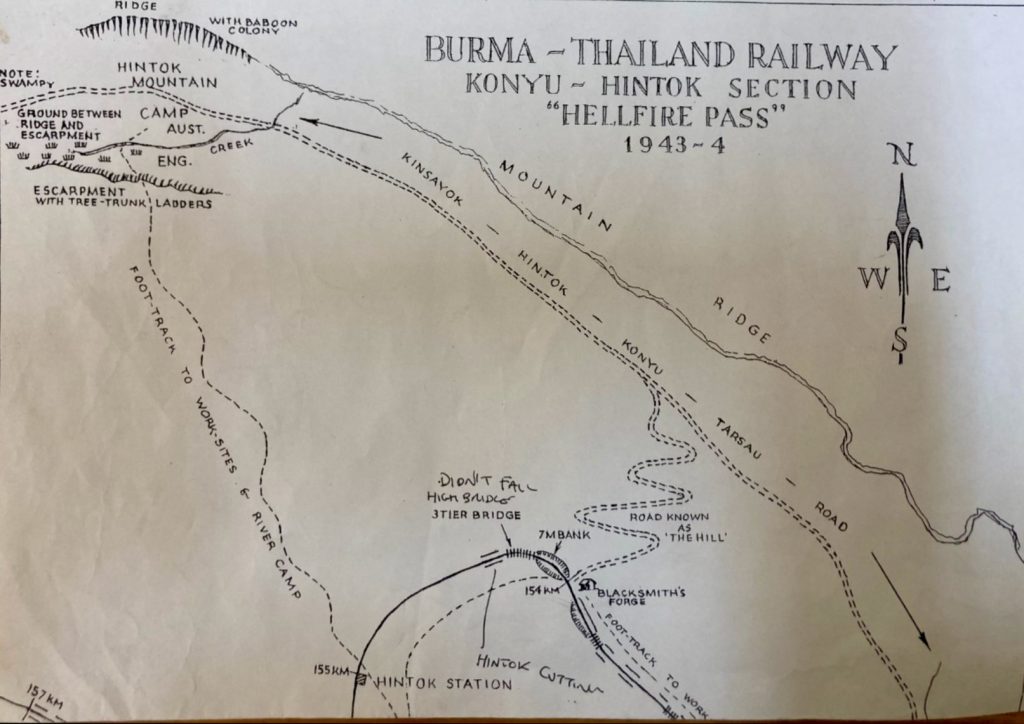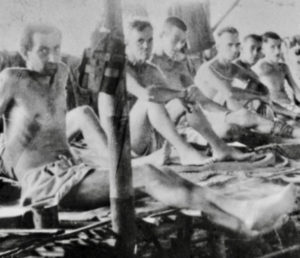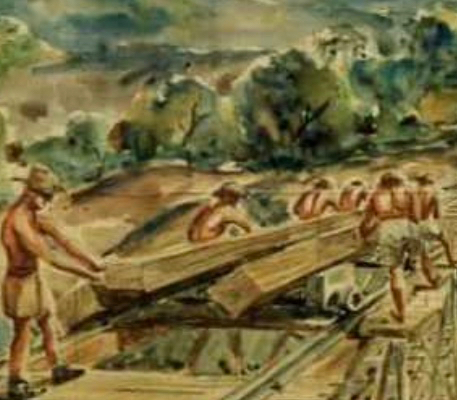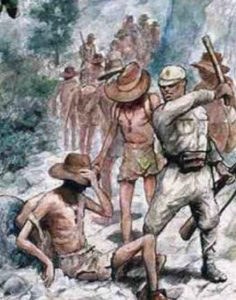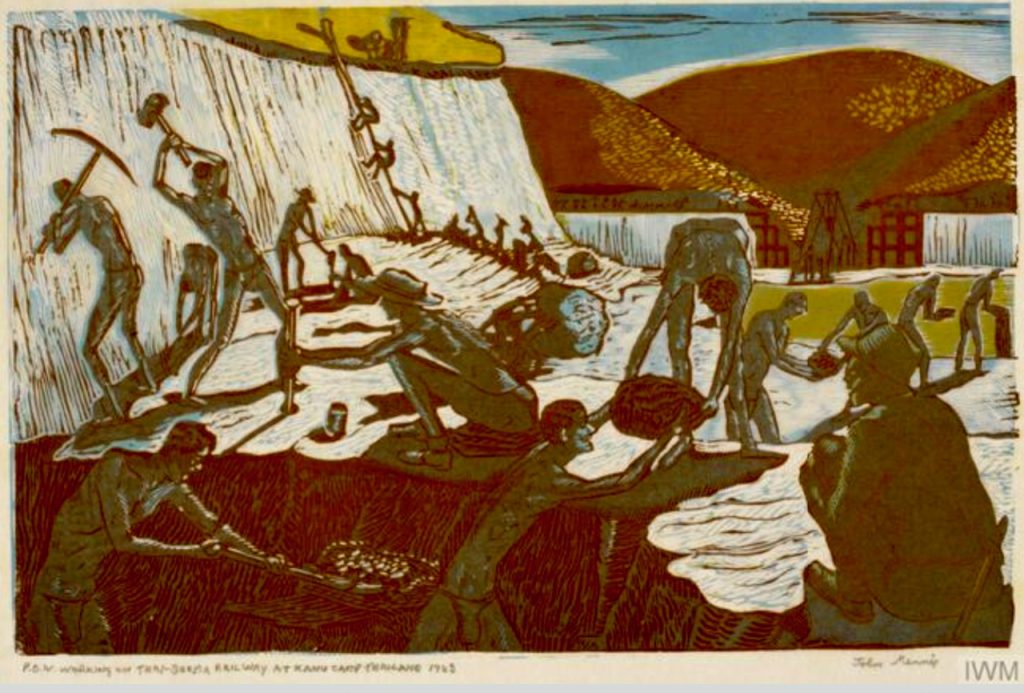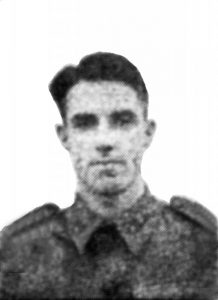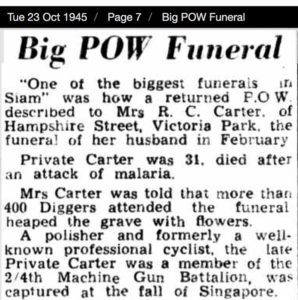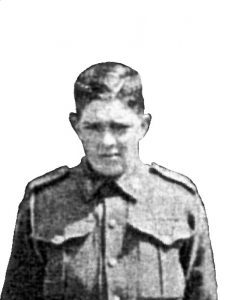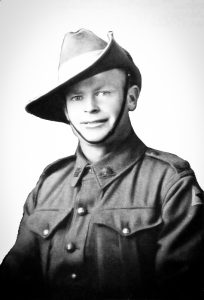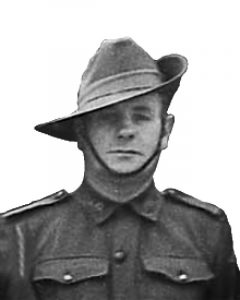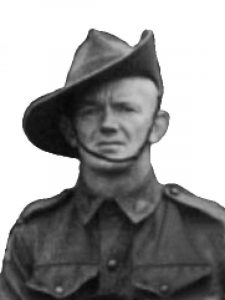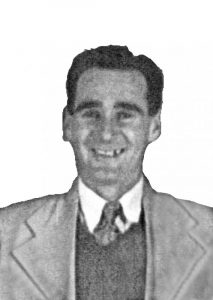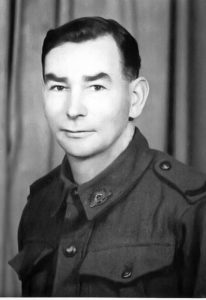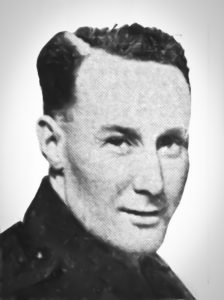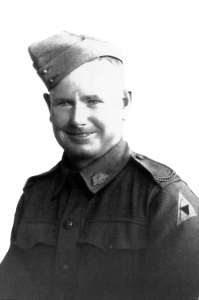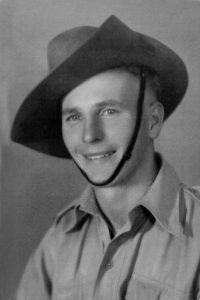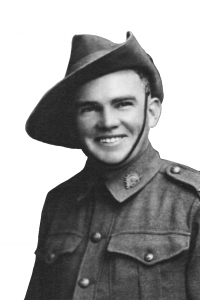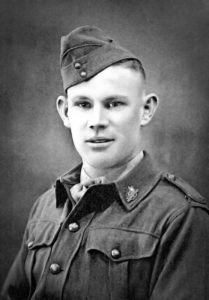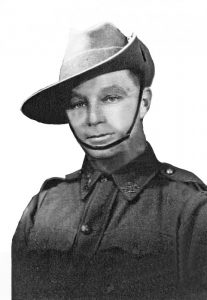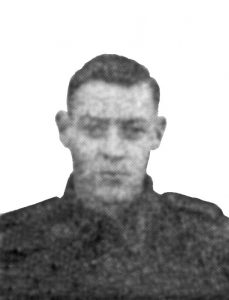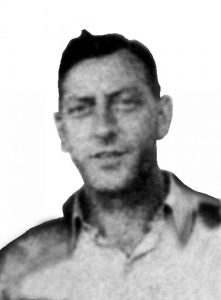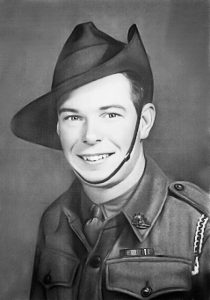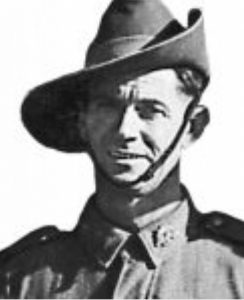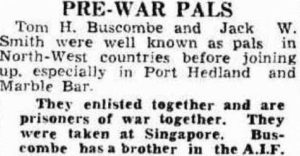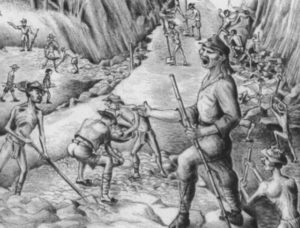The following is a brief overview of this Work Force movements and dates.
‘D’ FORCE S BATTALION (and ‘A’ Force Burma Green Force No. 3 Btn – had largest numbers of 2/4th men)
14 March 1943 Departed Singapore Railway Stn to Non Pladuk – overnight Konma Transit Camp
(69) TARSAU – 1st work camp – LATER TARSAU BECAME HOSPITAL CAMP FOR D FORCE . It was also Japanese HQ for D Force.
(45) KONYU II – arrived 25 April 1943 – 16 July 1943
A few days later about 200 men were sent to HINTOK ROAD CAMP – to bring O and P Btns up to strength – due to sickness.
(4 July 1943 first time sick were allowed to be evacuated from Konyu II – they were barged to Tarsau Hospital Camp or other base hospital camps such as Chungkai Hospital Camp)
after this men were split into groups – some sent to
(147) KINSAIYOK – 17 Sept 1943 to 6 December 1943
(40) HINTOK ROAD CAMP – 6 December 1943 to 13 January 1944 ( there are 3 Hintok camps could be any one! So we have generalised)
(40) HINTOCK RIVER CAMP – 13 January – 13 February 1944
(69) TARSAU back here until 28 April 1944.
TARSAU HOSPITAL CAMP D Force Hospital Camp – known for being over crowded and if possible men left here soon as they could for fear of their health deteriorating.
(127) TAMUANG – those decided fit by the Japanese were selected for Japan – entrained to Singapore, short stay RVR Transit Camp (20) Singapore.
NB POWs for ‘Rashin Maru’ all came from Tamuang (127) area i.e. ‘D’ Force & Hellfire pass area.
22 June 1944 Departed Thailand– Arrived Singapore 27 June 1944.
They entrained straight to Singapore from Thailand (skipping previous route to Saigon which became a disaster with American submarine blockade)
(20) RIVER VALLEY ROAD TRANSIT CAMP, Singapore – stayed here before departing.
4 July 1944 Boarded ‘Rashin Maru’ (aka Byoki Maru) – 70 day sail journey for 900 Australians (total POWs 1660) survived typhoon, American submarines and was locked in harbour Phillipines for some weeks by subs)
7 September 1944 ARRIVED MOJI, JAPAN,
(127) Yamane
(115) Niihama
For those who remained in Thailand, the POWs if healthy were sent out with various work parties throughout Thailand.
The hospital camps continued, however most POWs were sent to a recently constructed and very large hospital camp as well as a place to convalesce (for amputees such as 2/4th’s Tom Barbour, Syd Gorringe, Eric Ryan, Alllan Bamford)) called Nacompaton. Once the POWs were well they were again sent out to work.
NACOMPATON was set up from Dec 1943 – about 30 miles west of Bangkok. When the war ended Nacompaton became an Allied Forces collection centre – POWs could be moved to Bangkok and then fly to Singapore or fly via Rangoon to Singapore.
Lt-Col Galleghan in early August 1942, when he was in charge at Changi, requested area commanders to supply the names of majors and captains ‘who were physically fIt for field officer duty’ adding that officers might be required to swap formations in order to structure the ‘force’.
Galleghan had already attempted to remove Dunlop from his command (he came from Java) because Dunlop was a non-combatant’ officer. Peter Brune in his book ‘Descent into Hell’ wrote ‘we have identified the at times aloof, self-indulgent manner in which some Changi officers conducted their commands and lived’.
Galleghan’s decision to chose commanders for the Thai-Burma railway battalions from field officer ranks would prove a mistake. Brune further wrote, Lt-Col Pond made an observation as he left his work party camp “on the evacuation of the area camps, Havelock Road was left very dirty by Fairley’s party and Quick’s lines were so shocking that 250 other men were requested to clean up before Indians could move in”.
If Quick’s lines were shocking at a Singapore work party – how effective would he be commanding troops in Thailand where hygiene standards/camp organisation would prove a matter of life or death for the POWs??
__________________
Apart from the group that left Singapore with Major Charles Green, 2/4th MGB on ‘A’ Force Burma, ‘D’ Force S and T Battalions, i.e. Group 4 contained the largest number of men from 2/4th who worked on Thailand end of the Railway.
‘D’ Force Thailand included 2,220 AIF plus 2,780 British and Dutch totalling 5,000 POWs.
These POWs were placed into Battalions A to Z to work on the Hellfire Pass region of railway between Wampo north to Kinsaiyok – the demarcation camp between ‘D’ Force Group 4 Battalions and V Battalion Group 6.
Under the command of Major Cough, V Battalion’s camps would run further north from Kinsaiyok to Takanoon.
Australians made up S, T, (O, P, Q) U and V Battalions while the British and Dutch formed the remaining Battalions.
Lt.-Col McEachern ** was to command the four Australian Battalions – S, T,U,V – with his HQ incorporated into S Btn by order of the Japanese.
Battalions O, P, Q and R Battalions had already arrived to work on railway in late January 1943 from Java – they were under command of Weary Dunlop, and became known as ‘Dunlop Force’.
The AIF components from Singapore were also given Company Numbers.
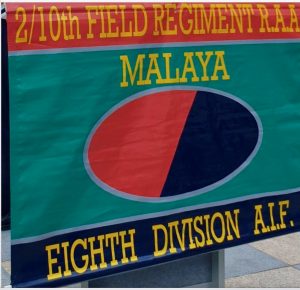

‘It was within the 8th Division 2nd AIF that an artillery regiment composed almost entirely of Queenslanders was raised—the 2/10th Field Regiment. The 2/10th formed and trained at Redbank in Queensland in mid-July 1940, as tensions grew about a foreign threat to the nation. Young men volunteered from all walks of life and all parts of our great state—from the farmers of the far north and the graziers of the west, to city kids from Brisbane and even an entire surf lifesaving club on the Gold Coast. The average age on enlistment was 21 years and four months. In Sydney, they boarded the Queen Mary at Circular Quay and embarked for Malaya on 4 February 1941. They disembarked at Malacca on 19 February 1941. A year later, many would be dead. The rest would be guests of the emperor.’
S Btn . No. 17 Company (under command Major G. Schneider from 2/10th Field Regt)
T Btn. No. 18 Company (under command of Major E.J. Quick, 4th Anti-Tank Regiment)
U Btn No. 2 Company (under command of Capt. Reg Newton, 2/19th Battalion).
The above Battalions were assigned to the Thailand Administration Group 4, however V Battalion was separated from other Australian formations (which was to prove disastrous for them) and assigned to Thailand Administration Group 6.
This complex administration system developed by the Japanese created many problems associated with essential supplies – mainly FOOD.
Each Thailand Administration Group was run separate from each other, as were the Burma Administration Groups – there existed jealousies between groups – there was certainly little or no communication and they certainly did not ‘help-each-other-out’.
The ‘D’ Force Group 4 area was the busiest and most congested along the entire length of the rail link. The terrain was mountainous and rugged, making excavation of cuttings through rock face and bridge building extremely difficult.
In this area of dense jungle, mountains, escarpments, hills and valleys between Kanu III and Hintok River Camp there were:
-
six cuttings including four major cuttings – two at Hellfire Pass, one at Hintok and lastly the Compressor Cutting,
There was also:
-
9 bridges including Three Tier and Pack of Cards bridges,
-
2 major embankments. The Seven Metre and another embankment that would replace Pack of Cards Bridge once the railway line was rerouted.
Additionally, there were 8 ledges from Hellfire Pass to Three Tier Bridge that had to be built up to compensate for the sloping terrain.
On 14 March 1943, S Battalion, numbering about 180 2/4th Machine Gunners departed Singapore by overcrowded train trucks under the command of Major G. Schneider of 2/10th Field Regiment and arrived at Non Pladuk on 18 March 1943. The POWs stayed overnight at the transit camp at nearby Konma.
The next day S Battalion travelled by truck 49 kilometres to Kanchanaburi for a brief stopover. It was here S and T Battalions then moved out to Tarsau via Tardan.
At Tarsau S Battalion was engaged for the next few weeks clearing the path ahead for the rail laying gangs. This work was described as being not particularly arduous (compared to their next camp at Konyu II) and the conditions and food at Tarsau at that time were reasonable.
T Battalion moved out of Tarsau 12 kilometres to the south where a camp was set up on a creek bed near the junction of a river where an embankment was being built up.
After two weeks T Battalion moved further south downstream of an established British POW Camp at Wampo. The Wampo Camps were 114 kilometres from Non Pladuk and 16 kilometres south of Tarsau. There were 3 Wampo Camps – North, Central and South. It is difficult to confirm where T Battalion was exactly camped.
The Australians had been brought into the Wampo area to assist the British with earth moving for an embankment. The path for the railway alongside the River Kwae Noi had been progressing slowly in preparation for construction of viaducts at 103 km and 109 km points. The pressure was on to complete the job and POWs worked shifts around the clock. The final shift produced a 30-hour spurt of energy – no doubt a measure of the Japanese Engineer’s stand-over tactics that would see the embankment job through to the end.
One of the viaducts was known as the Double Viaduct – a wooden bridge probably not unlike the Pack of Cards Bridge at Hintok, that was at least 400 yards long and built around the side of the cliff face and supported 25 feet above the River Kwae Noi. There was a gap of about 600 yards followed by another viaduct in the region of 150 yards long – hence the name double viaduct.
On completion T Battalion now marched north for 2 ½ days to join S Battalion in the area of Kanyu II Camp. The date is believed to be about early May and when S and T Battalions amalgamated. S Battalion is known to have arrived at Kanyu II on 25th April 1943. On 8 May 1943 Capt. Reg Newton of U Battalion was at Tarsau 1943 when T Battalion passed through, dropping off 50 sick POWs before continuing north 20 kilometres.
Within half a day of T Battalion’s arrival they were again back working on the Hellfire Cuttings, i.e. before the new camp was established half of T Battalion was sent to work!
‘We had located Major Quick’s ‘T’ Battalion early, on our arrival at Kenyu [sic], and received a shock to see the conditions under which they were living … a camp of exhausted, weak and very sick men. There was nothing we could do to help them.’
(From R.J.W. Newton’s book ‘The Grim Glory: The Official History of 2/19 Battalion AIF, 3rd edn, 2006, 502.)
T BATTALION CAMPS
TARSAU
WAMPO
KONYU II
HINTOCK RIVER CAMP
NON PLADUK
‘D’ Force S Battalion
Kanu II Camp 24 Apr 1943 to 16 July 1943
Located 152 km north of Non Pladuk the camp was on top of a plateau and above Kanu I River Camp. The camp was under canvas except the atap structures for the hospital, Japanese Headquarters, guard’s and store huts.
On 28 April, 200 men from S Battalion were sent to assist ‘D’ Force O and P Battalions who were at Hintok Road Camp.
For the POWs at Kanu II their task was to make a cutting, with very basic tools, through the monolith rock face for the railway line. Achieved by a method of hammer and tap, their task required the labour intensive process of drilling out holes in the rock, inserting explosives and blasting. Other POWs would immediately follow up and clear away the rock and debris in baskets.
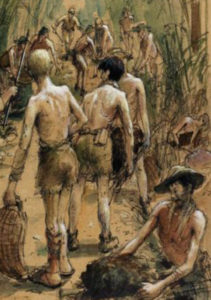 Initially this procedure may appear to be simple, however it was far from that.
Initially this procedure may appear to be simple, however it was far from that.
In the heat and rock glare men slaved away whilst their Japanese engineers and Korean guards watched over and never missed a moment to show their POWs their lack of mercy and their sadistic nature. The men mostly wore Jap happys, very few had shoes and no protection from the sun and glare from the rock face and worse the POWs suffered frequent cuts and abrasions mostly on their legs but often other parts of the bodies, from the flints of rock. The wounds were highly susceptible to infection resulting in painful ulcers that grew rapidly in the tropical climate sometimes covering an area from ankle to knee. Their camp doctor, Phil Milliard worked tirelessly without any medicines or medical equipment.
Cholera was expected with the wet season approaching. Several tents were pitched away from the main camp, 350 yards into the jungle to provide isolated accommodation for cholera patients from Kanu II and III Camps. Men suspected of having cholera were isolated from the others for up to 6 weeks medically cleared.
From Konyu 2, the men were split into smaller groups to work in various Hellfire Pass Camps including Hintock, Kinsaiyok, etc. until the railway was completed by end of 1943.
POWs from Burma were brought south to one of the large major camps, and the same for most of the POWs working in Thailand (there were exceptions – various work and repair parties remained as did the very sick hospital patients in Burma).
POWs were graded into ‘fit’, sick, very sick, etc. – and sent to Tamarkan, Chungkai and other hospitals.
Konyu 2 or Kanu 2 Camp’s Doctor was Capt Phil Millard – he was completely dedicated to saving the sick. The POWs relied and highly respected him. Please read further
Above: We wish to acknowledge IWM. Artiste John Mennie, British POW was POW here.
Thin men suffering from starvation are shown at work in a valley. In the foreground a man is digging at the face of a bank, with another passing a boulder to a fellow POW, and a chain of men passing rocks behind. To the centre-left a man is hitting a metal pole into the ground with a mallet, whilst another man holds the pole in place. To the far back left, men are working at the face of a hill, and some men shown climbing the face by rope. Part of the railway structure can be seen in the background, against the far brown hills.
Mennie’s scene shows an extreme example of an all-consuming construction project made possible as a consequence of war. Emaciated and dehumanised, these captives are forced to work. John Mennie was taken prisoner of war by Japanese forces in 1942. During this time he made many drawings on found bits of paper which were confiscated by the Japanese secret police but fortunately not destroyed. After the war they were found and returned to him. IWM now has a large collection of his original drawings, and prints such as this which he made later using the traditional Japanese woodblock method.
‘RASHIN’ MARU PARTY – JAPAN
The ‘fit’ were assembled at Tamuang and it was from here the Japanese selected POWs to work in Japan 56 Machine Gunners were included in this draft for ‘Rashin’ Maru Party.
The selection by Japanese soldiers ensured there were no soldiers with freckles, with dark skin or any skin abrasions were selected. They wanted to show off their prisoners in Japan.
The work party was entrained from Tamuang Camp, Thailand about 21 June 1944 for Singapore. They arrived five days later 26 June and sent to River Valley Road Transit Camp.
They did not have a long wait – many work parties destined for Japan waited weeks and weeks. POWs were loaded onto ‘Rashin’ Maru at Keppel Harbour which departed 4 July 1944. The ship was an old coal burner and would require making stops. She was carrying a cargo of rubber and 1660 POWs which included 900 Australians.
8 July 1944 – anchored off Miri, Sarawak and weighed anchor 10 July continued sailing close to coast of North Borneo.
11 July – anchored off Palawan Island, continuing sailing next day close to west coast of Mindoro Island, Philippines Islands.
16 July – at sunset ‘Rashin’ Maru sailed through Bataan Peninsula between Bataan and fortified Corregidor Island, anchoring in Manila Bay, Luzon.
A Lengthy and very uncomfortable 15 day wait occurred as coal and supply barges were unable to move close to unload. The ship was moved into a protected area of the harbour where it was calmer and where Japanese could be load coal and rations.
8 August 1944 – sailed in a convoy with 17 other ships. ‘Rashin’ Maru had spent 22 days anchored at Manila.
Suddenly the ‘Rashin’ Maru was under attack (roaming US submarine wolf packs patrolled the area) – and during the chaos the convoy was broken up with ‘Rashin’ Maru sailing for shelter of coast of Lingayen Gulf on opposite side of landmass which juts out on west side Luzon Island.
13 August 1944 – the ship nosed out of the Lingayen Gulf under a threatening overcast sky and into seas further fraught with danger. The little ship was now being tossed about on the sea, the war damaged and old ship was groaning with strain.
Realising ‘Rashin’ Maru was in danger from the typhoon, the cautious Captain steered towards land. ‘Rashin’ Maru to the POW’s relief, was now on the leeward side of Mabudi Island and had sought the sheltered anchorage provided by the triangle of three Bataan Islands.
It had been a truly terrifying experience being locked down in the ship’s hull. POWs recognised and were grateful for their experienced Japanese Captain who had first sailed his old and groaning ‘Byoki ‘Maru away from the convoy being attacked to the safety and shelter of the nearest landmass then survived the fury of the typhoon.
14 August – 0800 hours they set sail and on 15 August arrived Takao, at southern end of Formosa.
Their next port of call was Keelung on the northern end of Formosa.
There were several attempt to depart Keelung but were forced by by US submarines.
30 August -reached Naha, Okinawa.
Sailed from Kagoshima, on southern end of Kyushu Island and sailed along west coast of Kyushu.
7 September 1944 – finally, after 70 days the ‘Rashin’ Mau put into the port of Moji, southern Japan. POWs knew they had reached their destination because in the Captain’s haste (or relief) he slammed the ship alongside the wharf. He had alone captained the ship the entire journey and was probably well relieved!
The POWs were herded down the gangway, lined up on the wharf and stood utterly amazed they were now in Japan. The were soon split into kumis of 150 men and sent to their destined camps. A large group of men from 2/4th travelled to Nihama on northern coast of the Inland Sea of the island of Shikoku.
Please read further about ‘Rashin’ Maru Party, in particular the 56 men who sailed with this ship.
Below: Photo of ‘Rashin’ Maru as it was originally – when POWs boarded ‘Rashin’ Maru at Singapore 1944 at Keppel Harbour, the ship had had its bridge blown away and other battle damage, to the POWs at the wharf it appeared barely seaworthy. ‘Rashin’ Maru was quickly renamed ‘Byoki’ Maru – the ‘Sick’ ship. Once onboard POWs were to endure a 70 day sea journey to Moji, Japan. They endured a typhoon and on several occasions survived American submarine patrols – especially as ‘Byoki’ Maru tried to sail from Philippine harbour and resume the journey to Japan.
The conditions in the hell were horrific – ‘Byoki’ was one of many recognised “Hell Ships”.
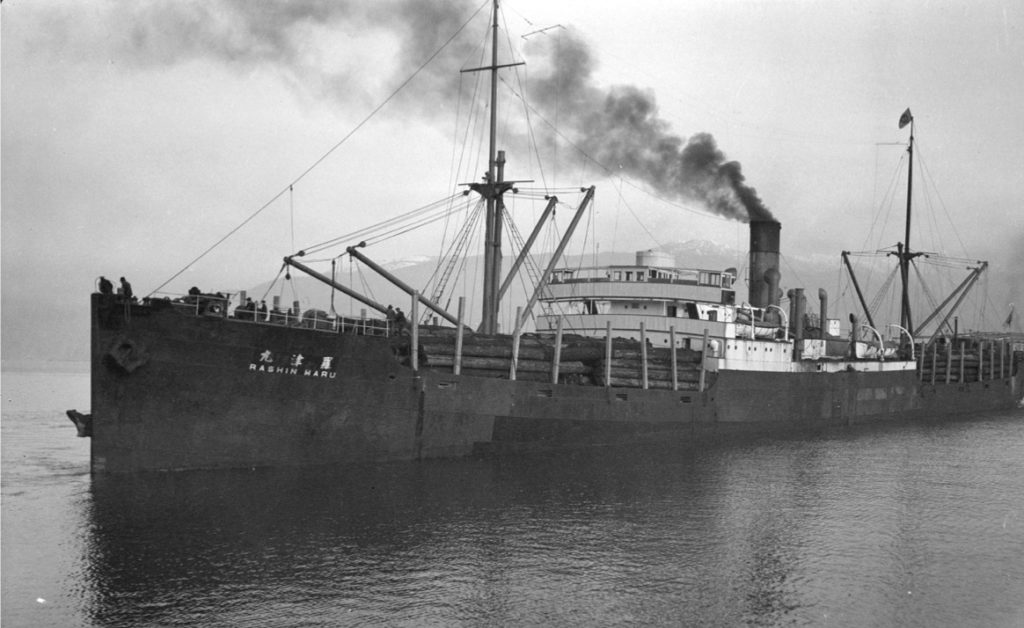
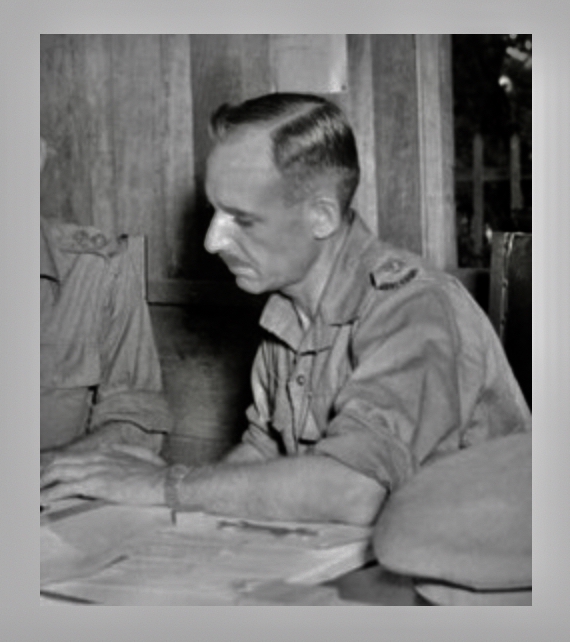
AWM 11735
**Lt- Col C.A. McEarchern of 2/4th Anti-Tank Regiment deployed to Malaya (Malaysia) with 8th Division. The unit saw action against Japanese from 27 December 1941 until the surrender on 15 February 1942. McEachern’s superior was Brigadier C. A. Callaghan.
-
McEachern assigned to command the Australian part (2220 men) of ‘D’ Force, sent March 1943 to work on Burma-Thailand Railway.
-
At Hintok Road camp, Thailand, he commanded the whole formation plus Dunlop Force (Lt Colonel Dunlop needing to concentrate on the growing number of sick readily handed over administration), some 5,000 Australian and British troops. His men worked on the ‘Pack of Cards Bridge’ and ‘Hell Fire Pass’. He was promoted to colonel and temporary brigadier with effect from April 1942. When Japan surrendered in August 1945, he was the senior Allied officer in Thailand. He took charge of repatriating approximately 30 000 troops.
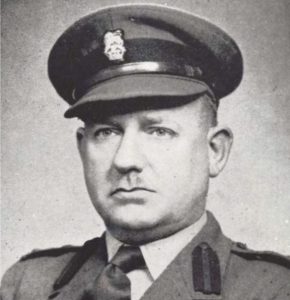
Brigadier C A McEACHERN DSO, ED [1905 – 1983]
-
__________
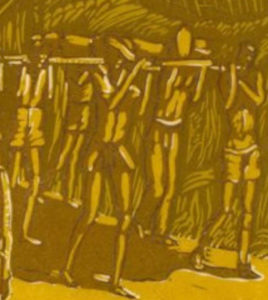 The following are
The following are
D Force ‘S’ Battalion
Men who died
working on Thai-
Burma Railway.
There were 28 POWs who died, 26 working on Burma-Thai Railway & further two later – Hindle d. Japan & King d. Korea 1950.
WX9361 Bartlett, Michael – b. Albany, from Mt Barker joined ‘C’ Company HQ.
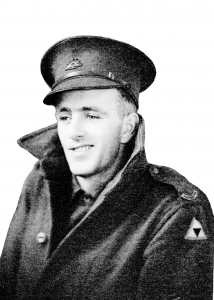
d. Tarsau 7 Dec 43 beri beri & dysentery aged 28.
WX15690 Carr, John ‘Jack’ – b. Katanning 1915. Joined ‘B’ Company 8 Platoon
evacuated Tarsau Base Hospital, d. 27 Jul 43 cerebral malaria & beri beri aged 28.
WX8445 Carter, Reg – joined HQ Company No. 3 Platoon
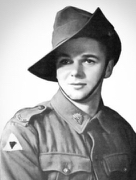
Died 18 Feb 1945 Chungkai of Blackwater fever aged 31.
WX9004 Cryer, Bert – English born Cryer was a Despatch Rider with ‘D’ Company HQ and moved to No. 15 Platoon when the 2/4th arrived Singapore.
– d 28 Jul 43 Typhus Kanu I River Camp aged 32.
WX8681 Davey, Roy William ‘Bluey’ – Kalgoorlie boy, Bluey joined ‘A’ Company 8 Platoon with Ron Badock.
– evacuated Tarsau. d. Dysentery & avitaminosis 1 Jul 43 aged 28.
WX8870 Gittos, Tommy – joined ‘A’ Company 6 Platoon
– evacuated with ulcers to Tamarkan Hospital Camp d. post leg amputation & dysentery 26 Sep 43 aged 23.
WX8869 Hindle, Herbert Roy Lance Corporal – was Driver/Mechanic with ‘B’ Company 9 Platoon.
Survived working Burma-Thai Railway, sent to Japan with ‘Rashin’ Maru Party. Killed by rock fall Sumitomo Besshi copper mine, Yamane, Shikoko Island, Japan 30 Sep 1944 aged 40.
WX9112 Jones, Benjamin Charles (Benny) Acting Corporal with ‘C’ Company 12 Platoon.
– evacuated to Chungkai Hospital Camp d. 5 Nov 43 of avitaminosis aged 30
WX9443 Jones Norman (Norm) known as Taffy was born Mostyn, NSW. Enlisted with Wenn from Bunbury where they worked in stevedoring. Both men Joined ‘C’ Company 10 Platoon.
– evacuated to Chungkai Hospital Camp d. 11 Nov 43 avitaminosis aged 37.
WX8007 King, Edric Herbert – born Northam. Joined ‘A’ Company 4 Platoon as a Driver.
– evacuated Tamarkan Hospital d. pulmonary tuberculosis 12 Nov 43 aged 32
WX16236 King, Alfred Victor Former Fairbridge Farm School boy.
Survived internment as a POW in Thailand and Japan. He rejoined the AIF – KIA 8 Nov 1950 only 42 days after in being Korea aged 26. King had no known family.
WX16391 Kluth, Gerry – enlisted from Wiluna. A former competitive cyclist he was Taken on Strength to Woodside Camp, SA on 5th October 1941 and joined ‘D’ Coy No. 14 Platoon.
d. cholera 5 Jul 43 Kanu II aged 23.
WX8767 Lakeman, Percy enlisted from Norseman (recorded his birth date as 1901 instead of 1898 because of age restrictions) joined 2/4th MGB ‘D’ Coy No. 14 Platoon under command of Lt. T H. Tompkins.
– d. 20 Jun 43 Kanu I River Camp malaria aged 44.
WX17759 Livingstone, John ‘Jack’ enlisted 24 November 1941, joined 2/4th reinforcements ‘E’ Company. Had previously been with 10th Light Horse Regiment at Mt. Helena.
He was one of the lucky to survive the Japanese ambush at South West Bukit Timah on 11 February 1942.
– evacuated Tarsau Hospital Camp d. 3 Sep 1943 malaria & tropical ulcers aged 21.
WXZ8639 Lynch, Joseph John ‘J.J.’ Joined ‘B’ Company 9 Platoon as Section Orderly.
– d 1 Aug 1943 cholera & typhus Kanu 1 River Camp aged 34.
WX8689 McMaster, Hector C.S ‘Billy’ – Scottish born MacMaster enlisted from Kalgoorlie. He played the bagpipes.
– evacuated to Tarsau Hospital Camp d. 25 Jul 43 beri beri aged 37.
WX8820 McCudden, Wally – joined 2/4th MGB’s ‘C’ Company 12 Platoon under Commanding Officer Lt. Mick Wedge. Wally’s mate from Esperance, Potty White was also in ‘C’ Coy, 10 Platoon.
– evacuated Chungkai Hospital Camp d. 21 Aug 43 cardiac beri beri & typhus aged 36
WX8621 McDonald, ‘K.K.’ Keith
collapsed while working Kanyu II, carried back to camp. Never regained consciousness. Evacuated to Tarsau Hospital Camp d. 25 Nov 43 Cholera aged 25 years.
‘ KK’ as he was widely known, was extremely popular and well-liked by the ‘boys’ of 2/4th.
WX11580 – McGlinn Don evacuated Tarsau Hospital Camp d. 15 Jul 43 dysentery & avitaminosis aged 28.
WX8012 Moir, Kevin ‘Georgie’ – Born Collie and enlisted from there joined ‘C’ Company 10 Platoon as a Range Taker.
– d. Hintok River Camp 7 Aug 43 Cholera aged 24
WX8118 Pearson, ‘Jack’ John Eyres – B. Kalgoolie 1900. Was highly respected and held the temporary rank of Lieutenant as POW. He had acted as the Commanding Officer of No. 7 Platoon when Lieutenant P. V. Dean was hospitalised. Pearson held the rank of Lieutenant in the militia in which he served from 1924-1929.
His younger brother Donald David Pearson WX13816 enlisted 3 June 1941 joining the 2/4th ‘B’ Coy – 7 Platoon, same as John. Don Pearson was sent to Burma-Thai Railway with ‘H’ Force Group No. 3, working at Kanu II, Malayan Hamlet and Kanchanaburi Camps. Don survived to return to his wife and family.
– evacuated Chungkai Hospital Camp d. beri beri and enteritis 13 Feb 44 aged 43
WX7320 Poyser, Les – Evacuated Chungkai Hospital Camp d. 21 Oct 43 amoebic dysentery & avitaminosis aged 37.
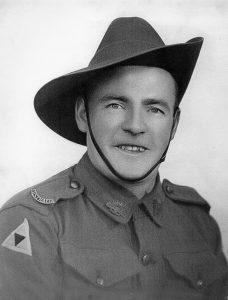
WX15941 Robinson Jim – came to Australia as a young boy with his parents from England. Enlisted AIF 20 Aug 1941, as a reinforcement joined 2/4th MGB, boarding ‘Aquitania’ at Gage Roads 15 Jan 1941 for Singapore. He was one of thirteen reinforcements to join Battalion Headquarters Company under Command of Lt-Col Anketell
Jim Robinson was evacuated Chungkai Hospital Camp d. 28 Aug 43 acute enteritis aged 28.
WX7509 Rodda, Arthur ‘Billy’ – Rodda enlisted AIF 6 Aug 1940, later joined 2/4th MGB’s ‘D’ Company No. 14 Platoon under Commanding Officer Lt. Tompkins.
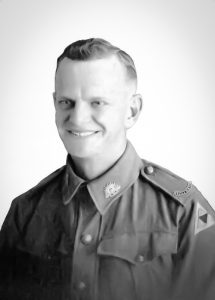
On 8.4.1944 at Chungkai in Thailand Lieutenant ‘Mick’ Wedge signed an I.O.U. for 12 Pounds and 10 Shillings for a small jar of Vegemite to help Bill recover from beri‐beri, a B group vitamin deficiency disease.
d. 20 Feb 45 cerebral malaria Nacompaton Hospital Camp aged 44.
WX8777 Sanderson, John ‘Jack’ Corporal – Joined ‘B’ Company 9 Platoon. ( Promoted Sergeant 15 Feb 1942.) Jack Sanderson played 19 games with West Perth Football team in 1930-31.
He was a very good mate with Ron Badock. He was travelling salesman for Sandovers, travelling from Wiluna to Esperance. He was a big man weighing nearly 15 stone but weighed less than half at death. (information from Ron Badock)
– evacuated sick to Tarsau from Kanu I, d. 18 July 43 beri beri & dysentery aged 35.
WX7211 Saunders, Cal – enlisted AIF 1 Aug 1940, later joined 2/4th’s ‘D’ Company 13 Platoon as Lance Corporal and Technical Storeman. In Singapore when another Platoon was formed to assist in manning the coastline, Saunders was moved to ‘D’ Company Headquarters.
– Evacuated Chungkai Hospital Camp d. 31 Aug 43 Post leg amputation haemorrhage aged 43
Tragically Cal’s wife Helen Saunders died 1932. She was mother to a young daughter, Betty. It was after Helen’s death, Cal headed out to the goldfields to work, before enlisting.
WX13353 Spouse, ‘Syd’ – enlisted 24 May 1941, joined 2/4th MGB as a reinforcement with ‘A’ Company, No. 6 Platoon. Spent his formative years at Dumbleyung.
– evacuated from Kanu II to Tarsau Hospital Camp. Died 13 Oct 43 heart failure aged 22.
WX8763 Warren-Smith, ‘Jack’ John – his enlistment details say he was born in 1902 to ensure he passed the age exclusion, however he was believed to be born 1897. He had spent years working in the north-west and was mates with Tom Buscombe and Archie Newell. The three werein ‘B’ Company 9 Platoon.
Jack d. 17 Jul 45 Prachuab Kirihan Camp aged 47. Cause of death was unknown.
WX6958 Young, John ‘Jack’ – born Glasgow, Scotland 1899.
John Young served in WW1, enlisting 7 December 1917 serving with Royal Flying Corps as fitter-armourer with No.’s 176 and 274 Squadrons.
At end of WW1 Young served with Palestine Brigade HQ then 111 Squadron and later renumbered as 14 Squadron achieving rank of AC 1st Class. During this time Jock would live in a very different climate. He would also meet Australians. He was discharged in July 1926 having experienced first hand the formation of Royal Air Force.
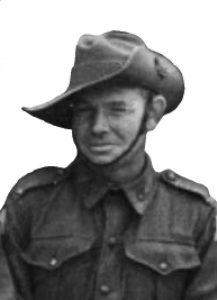
In Australia Jack worked in remote NW rural properties prior to enlisting.
Jack Young joined ‘A’ Company 4 Platoon.
He died 15 Aug 45 Nacompaton Hospital Camp of beri beri, dysentery, malaria & odema aged 46. 15 August was the date the Japanese capitulated.
_________________
The following 69 ‘D’ Force ‘S’ Btn men remained in Thailand and were recovered from there at end of war. Many of them missed the draft to Japan because they were either in hospital camps, recovering from serious illnesses or away on work parties.
WX9195 Basell, Jim
WX7937 Blakiston, Harry
WX9090 Bradshaw, Norman
WX9229 Breed, Walter
WX11573 Breeze, Gordon
WX7329 Briggs, Roy
WX8098 Burgess, Bill
WX7316 Burns, Jim
WX7661 Burslem, George
WX7790 Buscombe, Thomas
WX9261 Caimanos, John
WX9060 Cato, Alfred T.J.
WX9035 Cornish, Ron
WX17881 Doust, Owen
WX223 Feltham, Edward Thomas
WX5217 Ferrie, Charles
WX8586 Fitzgerald, Basil
WX8657 Flakemore, Charles
WX15719 Foot, Gordon
WX5335 Giddens, William Marcus
WX8623 Gilmour, Jim
WX9335 Gorringe, Syd – 30 Sep 43 Leg was successfully amputated below knee due to tropical ulcer. Recovered Nacompaton Hospital Camp.
WX7869 Green, Tom
WX5086 Gregory, Henry
WX7213 Hadden, Gilbert
WX8807 Halligan, Bill
WX6968 Heffernan, John Charles
WX8525 Heppingstone, Ian
WX82907 Hewby, Arthur Sidney
WX6778 Hills, John – Frequently sick with malaria & spent most of his time near hospital camps, Thailand.
WX8702 Japp, Gilbert
WX8730 Jenkins, Thomas
WX15640 Johnson, Henry Joseph
WX7624 Kemp, Eddie
WX8543 Kemp, Les
WX4877 Landwehr, Frederick
WX7042 Matthews, Roy
WX8620 McDonald, Clarrie
WX7675 McPherson, Cyril
WX8441 Mellor, John
WX9338 Moir, Lloyd
WX9223 Morgan, Alfred John
WX6173 Morris, Owen
WX9256 Nevile, George Edward
WX10790 Norris, Harry Claude
WX7981 O’Meara Joseph Patrick
WX9268 Pearce, Joe
WX9263 Popham, Edward C. S.
WX6129 Rees, Arthur John
WX7621 Reeves, Bill
WX14197 Ridgwell, Dick
WX8952 Reibe, Robert Ronald
WX7331 Robertson, Claude Wilfred
WX8734 Ryan, Con
WX9045 Saw, Harold Edward
WX16952 Simmonds, Roy Albert
WX6681 Skelton, John Bartley
WX7784 Smith, John Wilfred
WX13552 Smith, Roy
WX9058 Stribley, Norman Leslie
WX10794 Sturtridge, Percy
WX9134 Sumner, Joseph
WX12378 Swift, John Cecil
WX10864 Teasdale, Thomas Eric
WX7480 Thomas, ‘Bill’ William Llewellyn
WX9236 Waddell, John – separated from main group at Tarsau. Remained Thailand U Btn.
WX5021 Waghorn, Henry William
WX8502 Watt, Elliott Alfred A.
WX17804 Webb, Albert S.A.
WX9553 Wedge, ‘Mick’
WX9570 Westlake, Percy
WX8814 White, Clive Wharton
WX7477 Whiteman, David L.A.
WX7499 Williams, Ralph Thomas
The following 19 Machine Gunners were originally left Singapore with ‘D’ Force, and we believe S Battalion. Due to illnesses they separated from the main group and blended into sub-groups, including Harris Party. Most appear to have sailed with ‘Both’ Party, which departed Singapore for Japan, but sought refuge at French Indo-China. Several sailed to Japan with ‘Aramis’ Party.
WX8729 Badock, Ron – joined Capt. Harris Party – ‘Both’ Party to Saigon. Recovered Saigon
WX222 Barnett, Tom– joined Capt. Harris Party – ‘Both’ Party to Saigon. Recovered Saigon
WX12335 Brown, Ronald Edmund – Capt. Harris Party & ‘Both’ Party to Saigon
WX5221 Currie, Stanley – D Force S Btn – sent ‘Both’ Party to Saigon
WX8735 Curtin, John – Capt. Harris & ‘Both’ Party to Saigon
WX7864 Flanagan, Jim Joseph – Capt. Fred Harris Party & ‘Aramis’ Party to Japan – sent Fukuoka sub-Camps No. 17 Omuta & No. 21 Nakama
WX7607 Gibbons, Ronald Jack – D Force S Btn – ‘Both’ Party to Saigon
WX9139 Hadden, Lloyd – Captain Harris Party, recovered Thailand.
WX18170 Hickey, Stan – Capt. Harris Party & ‘Both’ Party Saigon.
WX90290 Hicks, George Halley – Capt. Harris Party & ‘Both’ Party Saigon.
WX9240 Hockey, Harold – believed to be with Capt. Harris Party & ‘Both’ Party to Saigon.
WX76497 Jeffery, Ronald Ralph – ‘Both’Party Saigon.
WX5175 Mann, Eric Horsley – D Force S Btn ‘Rashin’ Maru – remained Singapore ‘Both’ Party, Saigon.
WX13338 Miller, Reg – Capt Fred Harris Party & ‘Aramis’ Party to Japan, Fukuoka sub-Camp No. 17 Omuta.
WX10809 Nicholas, William John – W.O. II John Dooley Party & ‘Both’ Party Saigon.
WX8758 Starcevich, Joseph Frederick – Capt Fred Harris Party & ‘Aramis’ Party sent Fukuoka sub-Camp No. 17 Omuta.
WX10117 Thomson, Eric Gerrard – Capt. Fred Harris Party & ‘Both’ Party Saigon.
WX8753 Wheelock, Jack Logan – Capt. Fred Harris party & ‘Both’ Party to Saigon.
WX9002 White, Henry Charles Frederick – Capt Fred Harris Party – remained Thailand.
Reg Miller
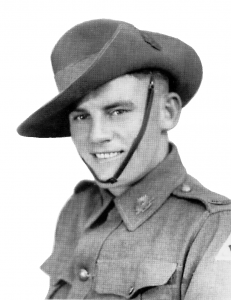 . Wheelock
. Wheelock
